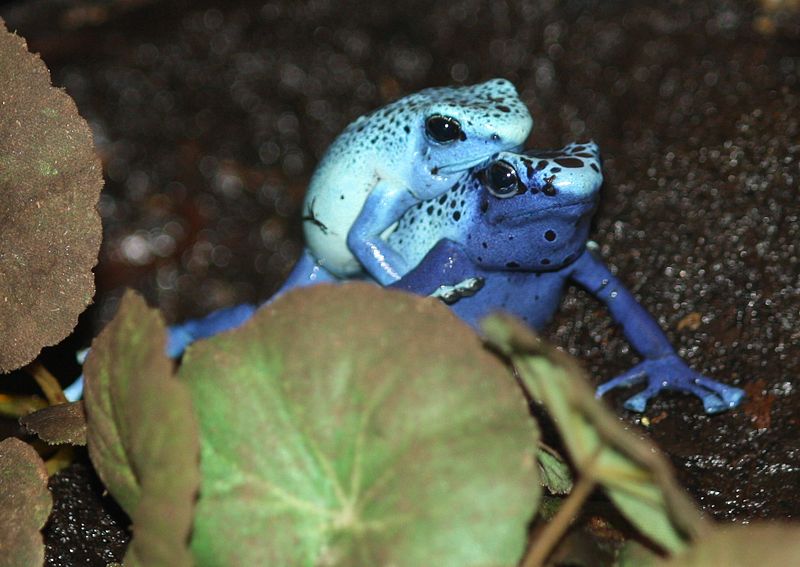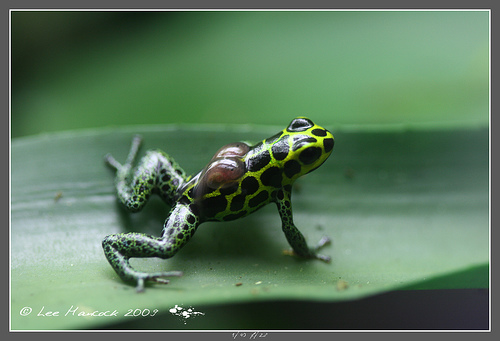Reproduction
Dyeing dart frogs have a mating season spanning from mid-July to mid-September which is during the rainy season of the rain forest. In anticipation for mating, male frogs will stake claims on mating territories and defend their claim by fighting other males. They will then let out a trilling noise which they use to attract females.

After a successful courtship ritual, the male and
female retreat to a location, usually a secluded
spot either in lower level tree leaves or among the
leaf litter on the ground. The eggs are NOT
laid in water. The female will
 lay
a clutch of anywhere from two to six eggs, though
variation is common with the male fertilizing the
eggs externally. The male takes over primary
care for the offspring, though the female does
assist, by moistening and cleaning the eggs and the
nest they have been laid. After a period of
about two weeks the eggs hatch and the parents take
the tadpoles upon their backs to transport them to
water. The water sources the tadpoles are
placed into are most commonly water pools within a
bromeliad leaf, as you saw on the main page, (though the
bromeliads they actually use are much larger), or
other such crevices which do not harness a lot of
water. (As mentioned previously, the tadpoles
are often places in different locations to avoid
cannibalism.)
lay
a clutch of anywhere from two to six eggs, though
variation is common with the male fertilizing the
eggs externally. The male takes over primary
care for the offspring, though the female does
assist, by moistening and cleaning the eggs and the
nest they have been laid. After a period of
about two weeks the eggs hatch and the parents take
the tadpoles upon their backs to transport them to
water. The water sources the tadpoles are
placed into are most commonly water pools within a
bromeliad leaf, as you saw on the main page, (though the
bromeliads they actually use are much larger), or
other such crevices which do not harness a lot of
water. (As mentioned previously, the tadpoles
are often places in different locations to avoid
cannibalism.)
The male from the parental pair then leaves the family, so to speak, while the female remains. The female will return periodically to lay unfertilized eggs which serve as food for the growing tadpoles. After a maturing period of about ten to twelve weeks the tadpoles undergo metamorphosis and develop into young froglets. The froglets are just as the adults, though sexually immature. From then on, the froglets will mature into young, sexually mature adults and begin to look for territories and mates of their own.
